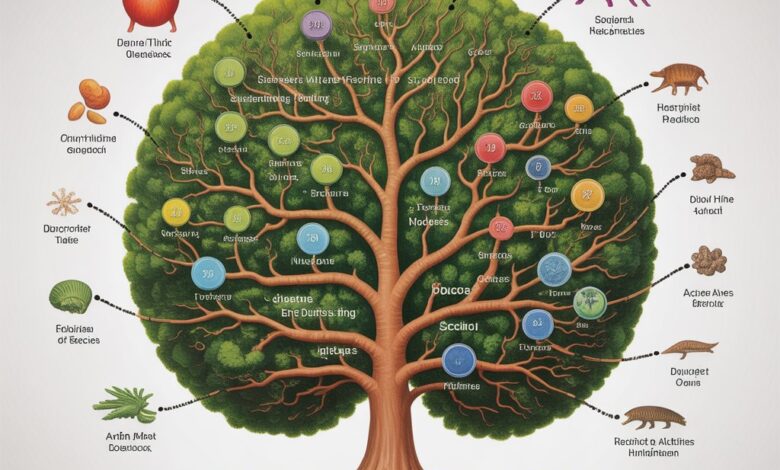Speciering: Understanding the Process of Species Formation

Speciering, also known as speciation, is the scientific process through which new species evolve from existing populations. It is one of the most fascinating aspects of biology because it explains the incredible diversity of life we see on Earth today. From the smallest microorganisms to complex animals and plants, speciering plays a crucial role in shaping ecosystems and driving evolution. In simple terms, it is the process that explains how one species can eventually split into two or more distinct species through genetic, environmental, or behavioral factors. By studying speciering, scientists gain valuable insights into evolution, biodiversity, and adaptation.
What is Speciering?
The word speciering comes from the biological concept of species formation. It describes how a single population of organisms gradually changes and becomes reproductively isolated from another population, leading to the creation of distinct species. Over time, these species may develop unique characteristics, adaptations, and survival strategies that suit their specific environments. This process is not instantaneous; it occurs over many generations and is influenced by a combination of natural selection, genetic drift, and environmental pressures.
Types of Speciering
Different forms of speciering occur depending on the circumstances under which populations become separated or diverge. The main types include:
-
Allopatric Speciering – This occurs when a population is divided by a geographical barrier such as mountains, rivers, or oceans. Over time, the separated groups evolve independently until they become distinct species.
-
Sympatric Speciering – In this case, new species arise within the same geographical area. This often happens due to genetic mutations, behavioral differences, or ecological specialization.
-
Parapatric Speciering – Here, populations are partially separated but still have some overlap. The gradual reduction of gene flow leads to new species over time.
-
Peripatric Speciering – Similar to allopatric speciering, but involves a small isolated population that diverges rapidly due to strong genetic drift and natural selection.
Each of these types highlights how diverse the process of species formation can be.
Factors That Drive Speciering
Several factors contribute to speciering, and understanding them is essential for grasping how biodiversity emerges. Geographic isolation is one of the most common drivers, as populations separated by natural barriers have limited interaction, leading to independent evolutionary paths. Ecological factors also play a major role because species adapt to different habitats, food sources, or climates. Genetic changes, including mutations and chromosomal variations, contribute to reproductive isolation. Additionally, behavioral differences such as unique mating calls, rituals, or breeding seasons can prevent interbreeding, further supporting the development of new species.
Examples of Speciering in Nature
Nature provides countless examples of speciering that help us understand the process better. The famous Darwin’s finches on the Galápagos Islands are a classic example of adaptive radiation, where a single ancestral species gave rise to multiple species with different beak shapes adapted to specific food sources. Another example is the cichlid fish in African lakes, which demonstrate rapid speciering due to ecological diversity. In plants, polyploidy is a form of speciering where new species arise from chromosome duplication, often leading to reproductive isolation from parent species. These examples highlight the importance of speciering in creating new life forms and enriching ecosystems.
Importance of Speciering in Evolution
Without speciering, life on Earth would not be nearly as diverse as it is today. Speciering is the mechanism that allows organisms to adapt to new environments, exploit different resources, and survive changing climates. It also explains why some species thrive while others go extinct. From an ecological perspective, speciering ensures that ecosystems remain balanced, with each species filling specific niches. For humans, understanding speciering helps in areas such as conservation biology, agriculture, and medicine, as it provides insights into genetic variation and adaptation.
Challenges in Studying Speciering
Although speciering is a fundamental concept in biology, studying it is often challenging because the process occurs over extremely long timescales. Fossil records, genetic studies, and field observations are used to understand speciation, but direct evidence is difficult to obtain. Additionally, hybridization between species sometimes blurs the lines of what defines a species. Despite these challenges, advances in molecular biology and genomics are helping scientists uncover the mysteries of speciering in greater detail.
Conclusion – Why Speciering Matters for Life on Earth
In conclusion, speciering is one of the most important processes in biology because it explains the origin of new species and the vast diversity of life. By understanding speciering, we can appreciate the dynamic nature of evolution and the factors that drive change in living organisms. From geographical barriers to genetic mutations, speciering shows how life constantly adapts and transforms. It also emphasizes the importance of protecting biodiversity, as each species plays a vital role in maintaining ecological balance. Ultimately, studying speciering helps us better understand our own evolutionary history and the interconnectedness of all life forms on Earth.
Frequently Asked Questions (FAQ) about Speciering
Q1: What does speciering mean in biology?
A: Speciering refers to the process of species formation, where new species evolve from existing populations through genetic, environmental, or behavioral changes.
Q2: What are the main types of speciering?
A: The main types include allopatric, sympatric, parapatric, and peripatric speciering, each occurring under different evolutionary conditions.
Q3: Can speciering happen quickly?
A: While speciering typically takes thousands to millions of years, in some cases, such as with plants or rapidly reproducing organisms, it can happen much faster.
Q4: Why is speciering important?
A: It explains biodiversity, adaptation, and the survival of species. Without speciering, ecosystems would lack balance and diversity.
Q5: What is an example of speciering?
A: Darwin’s finches in the Galápagos Islands are a famous example where one ancestral species gave rise to multiple species with unique traits.




